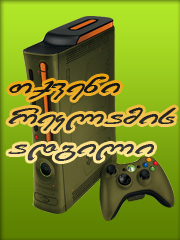 |
ტოპ მომხმარებლები |
 |
 |
| Admin Generalissimo | სიახლე: კომენტარი: პოსტი: | 1503 237 217 |
| Checked Major | სიახლე: კომენტარი: პოსტი: | 215 207 29 |
| Moder Major | სიახლე: კომენტარი: პოსტი: | 122 185 87 |
| Admin Colonel general | სიახლე: კომენტარი: პოსტი: | 51 93 11 |
| Checked Private | სიახლე: კომენტარი: პოსტი: | 27 49 5 |
|  |
 |
 |
 |
|
 |
L-29 |
 |
 |

The Aero L-29 Delfin (dolphin), NATO designation Maya, is Czechoslovakia's first locally designed jet aircraft. It made it's maiden flight in 1959. Production commenced in 1963 and ceased in 1974. This was a very successful design, that became the standard jet trainer for the Eastern Block countries, except Poland. It was also exported to a number of countries. About 3 500 of these jet trainers were built. Soviet Air Force alone obtained more than 2 000. This aircraft is now retired from military service, however it is still popular among civil operators. The L-29 Delfin is powered by a Czech Motorlet M701 turbojet engine. It was a simple, rugged, easy-to-build, operate and fly aircraft. This trainer could operate from unprepared airfields. It also had an impressive safety record for the type. Both instructor and pilot had ejection seats. The Delfin also served for weapons training role. It was equipped with hardpoints and could carry 200 kg of various weapons, including gun pods, bombs or rockets. In fact Egyptian L-29s were used in combat against Israeli tanks. The Aero L-29 Delfin was succeeded by the L-39 Albatros, which also appeared to be an extremely successful design. |
 |
 |
 |
 |
 |
F-2 |
 |
 |

ea ar aris F-16!!!!!
In October 1987, Japan selected the F-16C Fighting Falcon as the basis for a much developed version to replace the Mitsubishi F-1, primarily in the fighter support role. Although a costly ad controversial programme - one F-2 costs at least the same as four Block 52/52 F-16Cs - the F-2 illustrates Japan's commitment to maintaining its high-technology aerospace industry. The F-2 features a new wing of 25 per cent greater-area and co-cured, all-composite construction, with radar absorbent material on the leading edges. In order to house additional mission avionics that include an integrated electronic warfare system, the F-2's fuselage has a lengthened forward section when compared to the F-16C. Other features include a longer nose to accommodate an active phased-array radar, a larger tailplane, a brake chute and a strengthened canopy. Mitsubishi is the prime contractor responsible for airframe assembly as well as manufacture of the forward fuselage section, while the other major assemblies are produced by Lockheed Martin, Kawasaki and Fuji. With either wing tip-mounted AIM-9 or Mitsubishi AAM-3 air-to-air missiles, the F-2 still has 11 hardpoints available for other stores, including the ASM-2 anti-ship missile as one of the principa
...
კითხვის გაგრძელება »
|
 |
 |
 |
 |
 |
BTR-3U |
 |
 |

The BTR-3U armored personnel carrier was developed in 2000 by Ukrainian and UAE companies as a private venture. The BTR-3U is an improved variant of the Soviet BTR-80 armored personnel carrier, however it is a newly built vehicle, rather than upgrade of existing vehicles. Despite similar appearance the BTR-3U has greater internal volume, more powerful and fuel efficient engine, and many more improvements. Small numbers of the BTR-3U were ordered by Azerbaijan, Ecuador, Kazakhstan and Nigeria. Other operators are Iraq, Myanmar, Thailand and the United Arab Emirates. Ukraine expects to replace it's ageing APCs with the BTR-3U, however no orders from this country were made to date. The BTR-3U is armed with Shkval armament module. It is fitted with a 30-mm dual-fed cannon, 7.62-mm coaxial machine gun, 30-mm automatic grenade launcher and Konkurs anti-tank guided missiles. Weapons on the Shkval module can be replaced, fitting it with different anti-tank missiles and so on. Armor of the BTR-3U provides protection against small arms fire and artillery shell splinters. It is fitted with NBC protection and automatic fire suppression systems. The BTR-3U has a crew of three, including commander, gunner and driver. Vehicle provides accommodation for 6 troops. Troops enter and leave the vehicle through the side doors or roof hatches. A number of firing ports are provi
...
კითხვის გაგრძელება »
|
 |
 |
 |
 |
 |
Agusta A 129 Mangusta |
 |
 |

Conceived in response to an Italian Army requirement of the mid-1970s, the A 129 Mangusta (Mongoose) was the first dedicated attack helicopter to be designed, built and deployed by a European country. It was also the first in the world to be built around an advanced MIL-STD 1553B digital databus, which allows a high degree of automation, considerably reducing the crew workload. The first A 129 prototype made its official maiden flight on 15 September 1983 at Cascina Costa (although it had already taken to the air twice before on 11 and 13 September). The original Italian requirement had been for 100 Mangustas in distinct anti-tank and scout versions, but as the threat of all-out war in Europe receded, the final order was cut back to 60 A 129s. In the event, a total of 45 A 129s was delivered to AVES (Aviazone Escercito - Italian army aviation) between October 1990 and 1992, when production was stopped. Funding problems, and changing operational needs, forced the Italian army to re-evaluate its requirement for dedicated anti-tank helicopters. The need for a more multi-role helicopter was reinforced when Mangustas were deployed on UN peacekeeping duties to Somalia between 1992 and 1994. The Mangusta's primary TOW missile armament left it inflexible where combat against tanks was not a
...
კითხვის გაგრძელება »
|
 |
 |
 |
 |
 |
Kuznetsov class |
 |
 |

The Kiev class could never be considered true aircraft carriers. From the 1960s onwards, the rapidly expanding Soviet Navy began to see its lack of such a vessel to be a handicap, especially to a navy looking to spread its influence around the world. Several abortive projects were started, including the 1973 design for a nuclear-powered aircraft carrier of 85 000 tons which would be capable of accommodating 60 to 70 aircraft. In the early 1980s, two less ambitious projects began to make serious progress, the Project 1143.5 which was to become the Kuznetsov and the 75 000-ton Project 1143.7 which, had it been built, would have been the Ulyanovsk. This nuclear-powered ship with twin catapults was proposed to carry the upgraded Su-27KM and Yak-44 AEW/ASW fixed-wing aircraft within its complement of 60-70 aircraft. Initially, Western analysts anticipated that the ships would have a combined nuclear and steam (CONAS) propulsion plant similar to the Kirov battle cruiser and the SSV-33 support/command ship. However the class was in fact conventionally propelled with oil-fired boilers. Although superficially similar to American carriers, the 60 000-ton Soviet aircraft carrier was always intended to be subordinate to missile submarines operating in their bastions in the Arctic. It is capable of engaging surface, subsurface and
...
კითხვის გაგრძელება »
|
 |
 |
 |
 | « 1 2 ... 6 7 8 9 10 ... 32 33 » |
|
 |
მეგობრები |
 |
 |
|
 |
 |
 |
 | |



